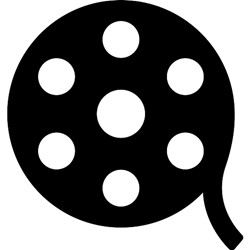If you've been an aspiring piano player for the least amount of time, you know that there are 12 different notes in  western music. But any song or piece of music is going to be written in what is referred to as a "key" of music. I prefer to define a key of music as 7 different notes in which a song (or piece of music) is composed of. Think of a key of music as a menu in which there are 7 choices. And by the way, there are 12 Major keys in music.
western music. But any song or piece of music is going to be written in what is referred to as a "key" of music. I prefer to define a key of music as 7 different notes in which a song (or piece of music) is composed of. Think of a key of music as a menu in which there are 7 choices. And by the way, there are 12 Major keys in music.
This is an easy concept, even for beginners. But it's often a source of confusion if the issue of Major and minor keys comes up. When you finish this article you'll easily understand the difference between Major and minor keys.
The first thing to understand about Major and minor keys is to hear the difference between the Major and minor sound.
A Major chord has a happy or bright sound as is in this example. A minor chord has a sad or dark sound as shown in this example.
A minor chord has a sad or dark sound as shown in this example. If you're familiar with Major and minor chords, you know that it's the 3rd (middle note) that differentiates both of these chords to give them their Major and minor sound.
If you're familiar with Major and minor chords, you know that it's the 3rd (middle note) that differentiates both of these chords to give them their Major and minor sound.
Just as you have Major and minor chords, you have Major and minor keys. I use the word key synonymously with the word scale just so you know.
A Major key of music consists of a specific pattern of notes. Here's that simple pattern. The tonic chord of the Major key is a Major chord. In this example, C Major.
The tonic chord of the Major key is a Major chord. In this example, C Major. This Major chord (aka the 1 chord) is home base and you'll often find it in a lot of music at the end of a song. It gives resolution and tells the ear: "the end".
This Major chord (aka the 1 chord) is home base and you'll often find it in a lot of music at the end of a song. It gives resolution and tells the ear: "the end".
The 1 chord is also known as a primary chord. There are actually 3 primary chords in a Major key of music.
The 4 chord is also a primary chord. It's based on the 4th note of the key. It's also a Major chord. In the key of C Major, it's the F Major chord. The 5 chord is the final primary chord in the key of C Major. It's the G Major chord.
The 5 chord is the final primary chord in the key of C Major. It's the G Major chord. Ok, so we have a Major key of music with the 3 primary chords which are all Major. Think of a Major key of music as a movie. The 3 main characters are the primary chords. The music that's constructed in this Major key revolves around them. They show more often and get more attention than any other chords in the song.
Ok, so we have a Major key of music with the 3 primary chords which are all Major. Think of a Major key of music as a movie. The 3 main characters are the primary chords. The music that's constructed in this Major key revolves around them. They show more often and get more attention than any other chords in the song.
So where do minor keys of music come in?
As I said earlier, there are 12 Major keys in music and at the same time, there are 12 minor keys in music. We started out defining these Major keys with a simple whole step/half step pattern. Even though there's a pattern to construct minor keys, I'm not going to cover it because that's not the simple way to learn minor keys of music.
Every Major key of Music has a relative minor key. Knowing how to translate a relative minor key from a Major key is the easiest way to understand Major and minor keys of music.
So here we have the key of C Major The relative minor key of C Major contains the exact same notes but in a different sequence. To find the relative minor key of any Major key, simply count up 6 notes from the tonic (or first note of the key)
The relative minor key of C Major contains the exact same notes but in a different sequence. To find the relative minor key of any Major key, simply count up 6 notes from the tonic (or first note of the key)
 So A minor is the relative minor key of C Major
So A minor is the relative minor key of C Major So what's the big deal if both keys contain the same notes?
So what's the big deal if both keys contain the same notes?
Because these same notes are in a different sequence, it changes everything because it changes the structure of the key. This will make any song written in this relative minor key sound a whole lot different.
Remember the primary chords in C Major I mentioned earlier? Well, the key of A minor also has 3 primary chords but they're not C, F and G.
They're still the 1, 4 and 5 chords. But again, the sequence of notes are different which changes what they are.
The tonic chord (the chord that often brings the song to an end) of the key of A minor is the 1 chord (A minor chord). The 4 chord is based on the 4th note of the key (D). It's also a minor chord.
The 4 chord is based on the 4th note of the key (D). It's also a minor chord. The 5 chord is based on the 5th note of the key (E). It's also a minor chord (but sometimes there's an exception which I'll explain in a moment).
The 5 chord is based on the 5th note of the key (E). It's also a minor chord (but sometimes there's an exception which I'll explain in a moment).
Going back to our Movie analogy, these are our new main characters that get most of the attention. And as a contrast to the primary chords of C Major (all Major chords), the primary chords of the key of A minor has all minor chords. Now let me explain the exception about the 5 chord that I mentioned.
to the primary chords of C Major (all Major chords), the primary chords of the key of A minor has all minor chords. Now let me explain the exception about the 5 chord that I mentioned.
In a Major key of music, the 5 chord is known as the dominant. The reason for this is that it has a very strong aural pull back to the tonic. This is because it contains the 7th tone which is known as the leading tone. You don't have this with the natural 5 chord in a minor key of music. For this reason, composers have often raised up the 3rd in the 5 chord making it a Major chord instead of minor. This is more common in classical music but it depends on the sound the composer wanted. You're free to play your 5 chord however you wish. I just wanted to explain why the 5 chord may not be minor in some cases.
You don't have this with the natural 5 chord in a minor key of music. For this reason, composers have often raised up the 3rd in the 5 chord making it a Major chord instead of minor. This is more common in classical music but it depends on the sound the composer wanted. You're free to play your 5 chord however you wish. I just wanted to explain why the 5 chord may not be minor in some cases.
The 5 chord in the key of A minor can be Major or minor

Is there an easier way to find the relative minor key without having to count up from 6? Actually there is. You can find the relative minor key by counting down 3 keys (inclusively) in any Major key.
C Major to A minor F Major to D minor
F Major to D minor G Major to E minor
G Major to E minor You'll find that understanding the difference between Major and minor keys will become much clearer as you progress through them the way that I've just explained.
You'll find that understanding the difference between Major and minor keys will become much clearer as you progress through them the way that I've just explained.
Greg Lee
Latest posts by Greg Lee (see all)
- What is a minor/Major 7 Chord? - October 26, 2023
- 7 Chord Substitutions that Professionals Use - October 19, 2023
- 5 Simple Chord Tricks to Sound Amazing - October 5, 2023



